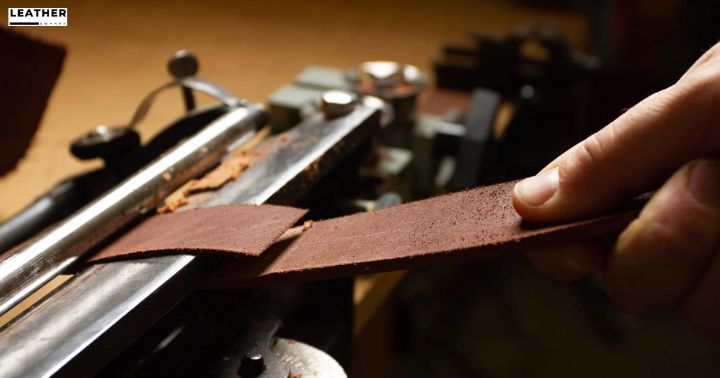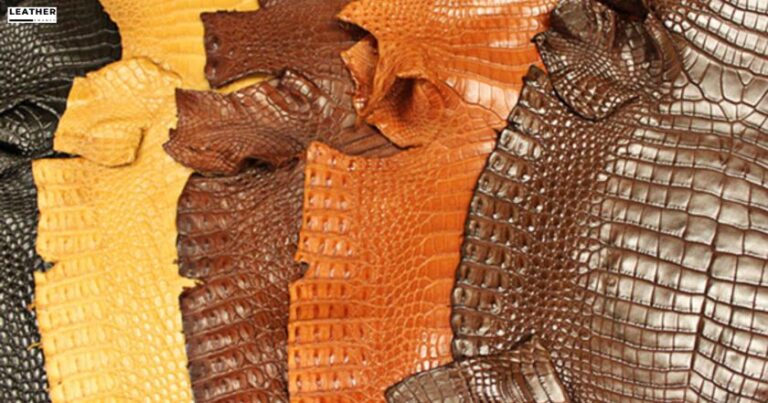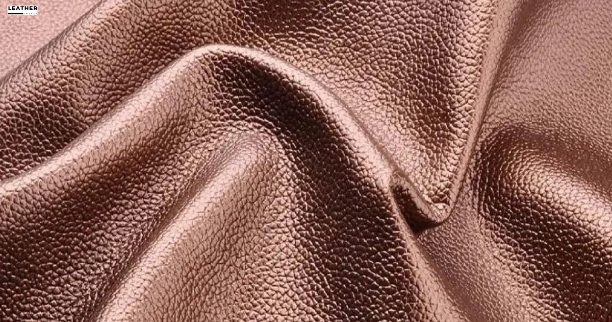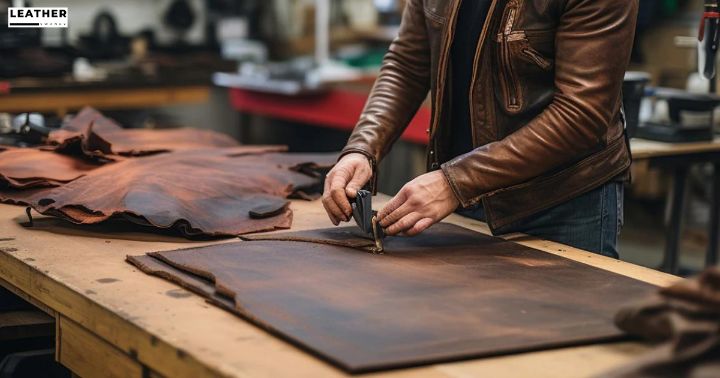How To Write On Leather? Explained in 4 Best Steps
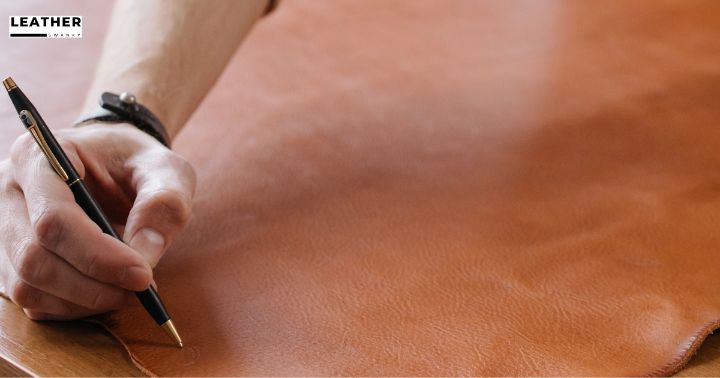
Writing on leather is a great way to add a personal touch to your favorite items.
Whether you want to engrave, carve, stamp, emboss, or draw something unique and special, it doesn’t take much effort to get creative with your leather goods.
To write on leather, make sure you have all the necessary items: a pen or pencil, an awl (or something to poke holes in the leather), tracing paper and/or carbon paper, some cardboard for practicing on, and of course your leather item.
Read this article to learn more about how to write on leather in 4 easy steps, when writing on leather is necessary, and the pros and cons of writing on leather.

Jump to a Specific Section
Summary
- Engraving, carving, tooling, and stamping are common methods of writing on leather.
- Techniques for engraving leather include carving intricate patterns, tooling with specialized stamps, stamping with metal stamps, and using leather markers or dye pens.
- Carving, tooling, or stamping leather involves using knives, chisels, gouges, specialized metal tools, wooden or metal stamps, quality materials, and appropriate tools.
- Embossing leather can be achieved by creating raised designs with shaped objects, using a silver leather marking pen or embossing tools, practicing patience, and avoiding excessive pressure on delicate leather.
Engraving
Engraving leather is a great way to customize your items. The process can be done through carving, tooling, or stamping.
You can create intricate patterns through this method, or just inscribe lettering on the leather. If you don’t want to go through all that effort, you could also opt for a simpler solution: a leather marker or dye pen.
These pens work by staining the leather and stay on permanently without any need for rubbing off excess dye or ink.
You can easily write words using these pens and they offer more control over lettering and details compared to other methods of engraving.
With careful planning and patience, you’ll be able to achieve amazing results when writing on leather with markers and dyes.
Carving, Tooling, or Stamping
Carving, tooling, and stamping are all ways to decorate leather.
Each technique requires a specific set of tools that allows for intricate detail and precise control.
Carving is done by using a knife, chisel, or gouge to cut into the surface of the leather. Tooling uses specialized metal tools with various shapes to create impressions on the surface.
Stamping is done by using wooden or metal stamps pressed into the leather with a mallet or hammer.
To achieve the desired look, it’s important to use quality materials such as leather markers, leather pens, chisels, and other appropriate tools when carving, tooling, or stamping on your leather project.
| Tools | Uses | Effects |
|---|---|---|
| Knife | Cutting | Intricate details |
| Chisel | Carving | Precise control |
| Gouge | Detailed designs | Smooth finish |
| Leather Pens | Inscribing | Leather Markers |
Embossing
It is the process of creating raised designs on leather by pressing a shaped object into it.
It is an ideal way to apply intricate designs and patterns to leather material, as well as create shapes that are difficult to achieve with other types of leather marking tools.
Drawing
It is a great way to personalize any item with intricate designs and patterns.
To do this, you will need a few specific tools: a leather marker, drawing pen, or leather pen; all of which are designed to write on the surface of the leather without causing damage.
What is Leather Marking?
It is a process that involves using tools to mark the surface of leather. It can be used to add text, images, or patterns onto pieces of leather.
There are many types of tools available for leather marking, such as stamps, paints, markers, and etching tools.
These tools produce an embossed effect that adds dimension and visual interest to any piece of work.
What Exactly is a Leather Inscription?
It is a decorative writing or drawing embossed onto the leather. It can be done using a variety of methods, but the most common is with a leather marker or pen.
Inscriptions are often used to personalize items made out of leather, like bags and shoes, for a special touch.
How to Write on Leather? Step-by-step Instructions
Writing on leather can be a daunting task, but with the right materials and careful attention to detail, you can create beautiful inscriptions that will last for years.
To get started, make sure to:
1. Clean the Leather Surface
Cleaning your leather before writing is essential for achieving a smooth and professional result.
To make sure you do this correctly, follow these steps:
| Step | What You’ll Need | How to Do It |
|---|---|---|
| 1 | Leather cleaner | Dip a cloth in the cleaner solution and gently scrub away dirt and grime from the entire leather surface. |
| 2 | Soft cloth | Dry the leather with a soft, damp cloth to help remove any remaining residue. |
| 3 | Leather conditioner | Apply a thin layer of conditioner over the entire piece of leather with a soft cloth to ensure it stays soft and supple after cleaning. This also helps protect against future staining or fading. |
2. Prepare the Workplace
Before you begin writing, make sure to prepare your workspace for the task:
- Have a clean work surface with plenty of room.
- Gather all necessary supplies like a marking pen and a special leather marker.
- Choose the right-sized pen that won’t damage the leather surface when you write something.
- Make sure to have a good source of light so you can see what you’re doing.
- Place a piece of cardboard beneath the leather to protect whatever is underneath it from any markings or staining that may occur as you write.
3. Write on the Cardboard
Place a piece of cardboard beneath the leather to protect whatever’s underneath it from any markings or staining that may occur while you’re writing.
Before starting, choose the right pen or marker for writing on this leather surface.
This is important to prevent making permanent markings on the leather. Then, take the time to practice writing on the cardboard with your pen or marker.
This will help you get familiar with how it looks and how it handles when creating letters and shapes.
Once confident in your choice of writing tool, start writing directly onto the cardboard cutout using steady pressure and consistent strokes.
4. Start Writing on the Leather Surface
Once you’re confident in your writing tool, begin writing on the leather surface with steady pressure and consistent strokes.
It’s best to use a leather marker or pen that won’t bleed through the real leather. Use light strokes for thin lines and press harder for thicker lines.
Recommended tools:
| Tool | Description |
|---|---|
| Leather Marker | A permanent ink marker is used to write on leather. |
| Leather Pens | Pens are specifically designed to write on leather without smudging or bleeding through the material. |
Be creative, detail-oriented, and patient when writing on leather as it requires special care and attention.
The key is to work slowly so that you can get a good result with minimal mistakes.
Pros and Cons of Writing on Leather?
Writing on leather has both its advantages and disadvantages, so it’s important to weigh these before committing to a project.
| Features | Advantages | Disadvantages |
|---|---|---|
| Wide range of options | Leather markers, leather pens, etc. provide various colors and styles for projects | Ink can be hard to remove if mistakes are made |
| Durability | Writing on leather can last for many years with proper care and maintenance | Wear and tear will affect the look over time |
| Style & Class | Writing on leather adds style and class to any item whether it is a bag, shoes, or other leather goods | Care must be taken not to damage the material when writing on it |
| Cost Effective | Writing on leather is generally inexpensive compared to purchasing pre-made items with writing already done | The Quality of supplies used in writing can affect the longevity of results |
Weighing these pros and cons carefully will help ensure success when attempting any type of project involving writing on leather.
Final Thoughts
Writing on leather can be a fun and creative way to add something unique and personal to your piece.
You can choose from engraving, carving, tooling, stamping, embossing, or drawing. Each method has its own pros and cons so it’s important to understand the differences before you start.
You’ll also want to make sure you use the right tools for the job and take care of your leather material when writing on it.
With a bit of patience and creativity, you can create something special that will last for years to come.
Frequently Asked Questions
What type of ink is best for writing on leather?
For writing on leather, the best ink to use is waterproof pigment-based ink. It provides clear, permanent marks that won’t smudge or fade.
Is there a way to remove writing from leather?
Yes, there are ways to remove writing from leather. Try using a damp cloth and rubbing alcohol to gently wipe away the ink.
What types of leather can I write on?
You can write on different types of leather, including cowhide, lambskin, pigskin, and suede. However, keep in mind that some leathers may be more difficult to write on than others.
What should I consider when writing on leather?
When writing on leather, consider the area of the leather where you want to write, the type of leather you are working with, and the design or text you want to inscribe.
How does writing on leather work?
Writing on leather is similar to writing on any other surface. You can use a pen or a paintbrush to apply your desired text or design onto the leather. The key is to use the appropriate tools and materials that are suitable for leather.

